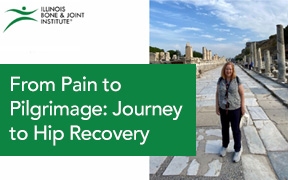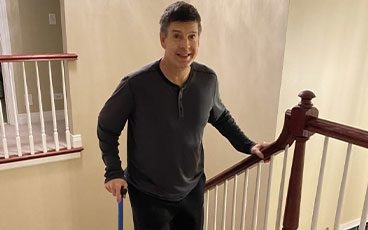IBJI’s Clinical Approach to Living Better with Bone Loss
As patients age, they face increased risk of osteoporosis, a condition that causes bones to become weak and brittle. Because osteoporosis makes bones more fragile, patients with this condition are more susceptible to injuries. Having osteoporosis can lead to painful fractures, sometimes caused by simple actions like bending or twisting. For many people, it isn’t until a fracture occurs that osteoporosis is diagnosed.
Unfortunately, patients who have had a fracture due to osteoporosis face increased risk of suffering another fracture. Which is one of the reasons that IBJI is so committed to working closely with patients to educate them about the importance of diagnosing and treating osteoporosis as soon as possible.
Many factors play a role in increasing the risk of developing osteoporosis. People over the age of 50 are at greater risk, as are people with a family history of osteoporosis. Patients with low bone mineral density have an increased risk, as do those who have a long history of steroid (glucocorticoid) medication use. Hormonal changes can also be a factor, especially for women who have gone through menopause and men with low testosterone.
IBJI’s team of bone and joint experts wants to help patients understand who is at risk and what can be done to manage osteoporosis. Which is why they have created a program designed to detect osteoporosis and minimize its effects. IBJI’s program helps patients identify risk factors and understand the linkage between osteoporosis and fractures. It also helps pinpoint appropriate screening measures and tests to diagnose osteoporosis sooner rather than later. “We’re actively working to identify those at risk so that we can diagnose osteoporosis early and immediately begin rebuilding bone strength,” explains IBJI’s Jill Pokorny, a nurse practitioner at IBJI’s Libertyville location.
The program teaches patients what they can do to strengthen their bones, decreasing the chance that they will suffer a fracture. Preventing fractures, especially to critical joints like the hip, can have a long-term impact on quality of life. Research shows, for example, that up to 50 percent of hip fracture patients never fully heal from their injury. So avoiding subsequent fractures takes on added significance. Research also shows that patients with good bone strength experience better surgical outcomes than those with weaker bones.
“We’ve designed a clinical approach to managing osteoporosis,” explains Stanford Tack, MD. “IBJI provides a continuum of care, everything from diagnosis to treatment to rehabilitation services. By treating the root cause and actively working to build better and healthier bones, we are able to reduce the likelihood of future fractures and improve outcomes for IBJI’s patients,” according to Dr. Tack.
For more information on risk factors, diagnosis and treatment of osteoarthritis, please visit www.ibji.com.




